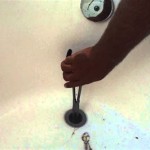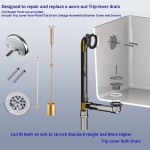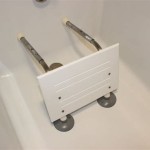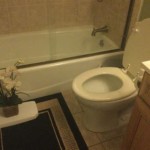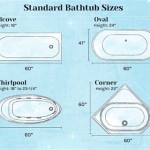How To Unclog A Bathtub Drain With a Standing Water Plunger
A clogged bathtub drain is a common household plumbing issue, often resulting in standing water. While chemical drain cleaners offer a quick fix, they can damage pipes over time. A more environmentally friendly and often equally effective solution is using a standing water plunger, specifically designed to work with water already present in the tub. This article details the process of unclogging a bathtub drain using this tool.
Before beginning, it's crucial to select the correct type of plunger. A cup plunger, typically used for sinks and toilets, is ineffective for bathtubs. A flange plunger, also known as a toilet plunger, or ideally, a specialized accordion plunger, is required. The accordion plunger's design provides greater suction and flexibility, making it highly effective for tackling bathtub clogs. Ensuring the correct tool is the first step towards a successful unclogging operation.
Preparation is key to maximizing the plunger's effectiveness. If the overflow drain is open, it must be blocked. A wet rag can be stuffed into the opening, or it can be covered with a piece of strong adhesive tape, such as duct tape. This prevents air from escaping through the overflow drain, concentrating the plunger's force on the clog. This step is essential for creating the necessary pressure differential required to dislodge the obstruction.
Adding water to the tub is the next step. The plunger needs enough water to submerge its cup or flange fully. If the existing standing water is insufficient, additional hot water should be added until the plunger's cup is covered by a few inches of water. The hot water can also help soften any soap scum or grease contributing to the clog, further aiding the unclogging process.
With the preparations complete, the plunger can be placed over the drain opening. The plunger's cup or flange should create a complete seal over the drain. It's important to ensure a tight seal to maximize suction. Any air gaps will significantly reduce the plunger's effectiveness.
Once the plunger is securely positioned, begin plunging. The plunging motion should be firm and vertical, pushing and pulling the plunger up and down without breaking the seal with the drain. Rapid or jerky movements are less effective and may splash water out of the tub. Consistent, controlled movements are key to building up pressure and dislodging the clog.
Continue plunging for several minutes. It may take some time for the clog to break free. Periodically, lift the plunger slightly to check if the water is draining. If the water drains quickly, the clog has likely been cleared. If the water drains slowly, continue plunging for a few more minutes.
If the water remains stagnant after several minutes of plunging, the clog may be more stubborn. Repeat the plunging process several times, ensuring the overflow drain remains sealed and the plunger maintains a tight seal over the drain opening. Persistent plunging often dislodges even the most stubborn blockages.
For particularly resistant clogs, a drain snake or auger can be used in conjunction with the plunger. After several rounds of plunging, insert the drain snake into the drain and attempt to break up or pull out the clog. Follow this by further plunging to flush out any remaining debris. This combined approach is often effective for more complex clogs.
Once the water drains freely, flush the drain with hot water for several minutes. This helps to clear any remaining debris and ensures the drain is functioning correctly. Regularly flushing the drain with hot water can help prevent future clogs by minimizing the buildup of soap scum and hair.
Preventing future clogs is an important part of maintaining a functional bathtub drain. A drain strainer can be placed over the drain opening to catch hair and other debris before they enter the drain. Regularly cleaning the strainer helps prevent buildup and maintains optimal drain performance.
In addition to using a strainer, periodic maintenance can help prevent clogs. Flushing the drain with hot water and baking soda once a month can help break down soap scum and grease, reducing the likelihood of blockages. This simple preventative measure can significantly extend the time between clogs.
While a standing water plunger is a highly effective tool for unclogging bathtub drains, some clogs may require professional intervention. If the clog persists after repeated attempts with a plunger and drain snake, contacting a qualified plumber is recommended. A plumber has the expertise and tools to address more complex plumbing issues and can ensure the problem is resolved effectively and safely.

How To Unclog A Bathtub Drain Without Chemicals

How To Unclog A Bathtub Drain 11 Diy Clog Busters

How To Unplug Or Clear A Bathtub Drain Easily

How To Unclog A Drain With Standing Water 12 Steps

How To Easily Unclog Bathtub Shower Drain In 5 Minutes Jonny Diy

How To Unclog A Drain With Standing Water 12 Steps

How To Unclog A Shower Drain With Standing Water Best S

How To Unclog A Bathtub Drain Homeserve Usa
How To Unclog My Bathtub Drain With Standing Water In It Quora

One Simple Trick To Unclog Your Tub Drain The Creek Line House


